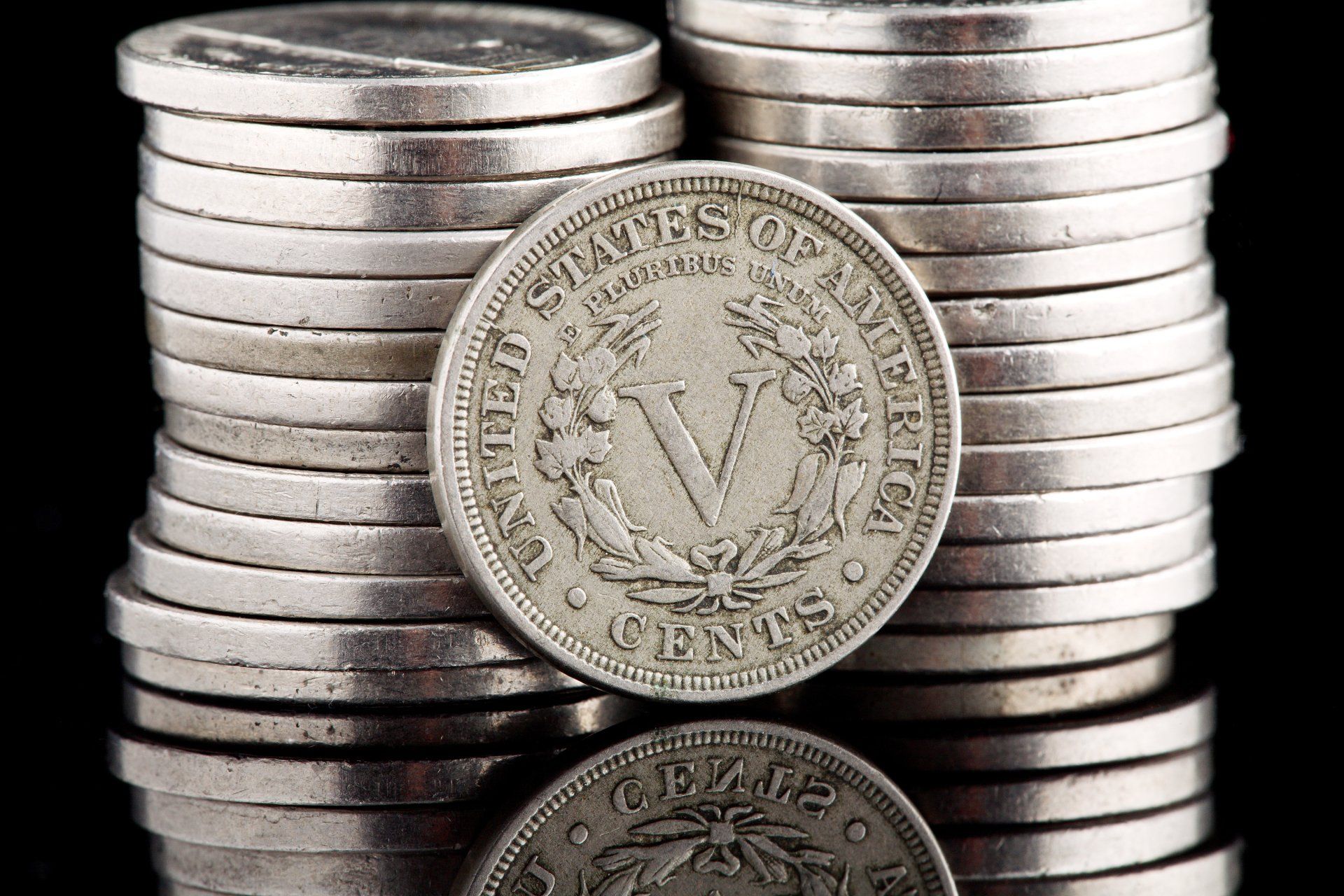The Liberty Head V Nickel
A Coin Worth Millions

You’re probably familiar with the famous 1913 Liberty head V nickels, no one knows where they came from, or who at the Mint decided to unofficially strike them.
But in 1920, five of the coins surfaced.
Designing the Liberty Nickel
The obverse of this coin portrays Lady Liberty in profile, facing left, donning a coronet inscribed with the word "LIBERTY" and a wreath along the top of the coronet. The reverse of the coin features a wreath of wheat, cotton, and corn (America's main exports at the time), and the Roman Numeral "V" for the number five.
The Liberty Head nickel was a response to the many production issues the Shield nickel faced. In 1881, Barber was told to replace the Shield nickel, given a set of stipulations on the coin, which was to be a similar design on a one-cent, three-cent, and five-cent piece. The five-cent piece ended up being the only one approved.
Barber ended up producing quite a few pattern coins in the process of finalizing the Liberty Head nickel, and finally in 1882 the Mint and Barber were happy with the design and sent 25 coins to Washington for approval.
The coins were rejected.
Treasury Secretary Charles J. Folger rejected the design because by law “United States of America” had to appear on the reverse of the coin and not the obverse. No exceptions were made and Barber had to redesign the coin with “United States of America” featured on the reverse.
Finally in 1883, the coins were ready for production. The first Liberty Head nickels were struck on January 30, 1883, and the first coins made it into circulation on February 1.
Faking a Gold Coin
The first strikes in the first few months of the new Liberty nickels did not have the word "cents" featured on them, this was deemed unnecessary as the three-cent piece had been circulating with a Roman numeral on it to indicate the denomination without any issues.
But it didn’t take long before enterprising fraudsters realized that the new five-cent piece looked very much like the $5 gold coin. If they just plated the five-cent piece with gold, it could pass as one of the $5 gold coins that were currently circulating!
One story of fraudulent $5 coins claims that a man would buy something at a store for .05 cents or less using the fake $5 coin, and the clerk would give him change for $5.00, which the man accepted as a “gift”!
Supposedly the law had nothing they could charge him with as he never bought anything worth more than five cents!
The Mint quickly had Barber change the design to include "Cents" on the reverse of the coin, just below the "V" and the new coins were released in June of 1883.
For the first couple years of the Liberty nickel, mintages were quite high followed by a lull for a few years. But from 1887 to 1894 there was such a high demand for the nickels the Mint couldn’t keep up!
By 1912, the Liberty nickel was on its way out, soon to be replaced by the Buffalo nickel (which became much loved in later years and still today).
But the Liberty nickel had one final hurrah.
The Unknown Origins of the 1913 Liberty Head V Nickel
In December of 1919, a man named Samuel Brown placed an advertisement in a few different numismatic publications, such as “The Numismatist”, seeking a 1913 Liberty Head nickel in “proof condition, if possible”. Now, no 1913 Liberty nickels were even known to have been struck at this time.
It’s unknown if anyone ever reached out to him for his offer, or if perhaps he had the coin all along, but in August of 1920, he displayed one such specimen at the annual American Numismatic Association convention!
Apparently he had five of them!
According to Brown, the coins had been struck on the master die for 1913 as test pieces, but as to how he acquired these pieces will probably remain a numismatic mystery.
A popular theory is that he struck them himself, as it seems he was employed at the Mint for a number of years (though this was not known until many years after the fact). According to records however, the master dies had been returned almost immediately after the California mint received them and were destroyed!
That’s a mystery that I would pay good money to hear the real story behind!
Brown sold all five of the coins a few years later to a Texan collector named Col. E.H.R. Green, who had them for fifteen years before the collection was finally split up and sold in 1943.
A $4.5 Million Dollar Coin
Since then the coins have all changed hands more than a few times, including Louis E. Eliasberg, who is known for assembling the only complete collection of U.S. coins. Two of the coins are also now on display, with one residing in the Smithsonian in Washington, and another in the ANA Money Museum in Colorado Springs. The remaining three coins are all privately owned, and in August of 2018, one specimen sold for a whopping $4.5 million!
What’s your theory on the 1913 Liberty Head V nickels? Do you think Samuel Brown illegally struck them on his own? Or do you think they were really “test” strikes? Or perhaps you have another theory of where they came from? Let us know in the comments! We’d love to hear your ideas!

